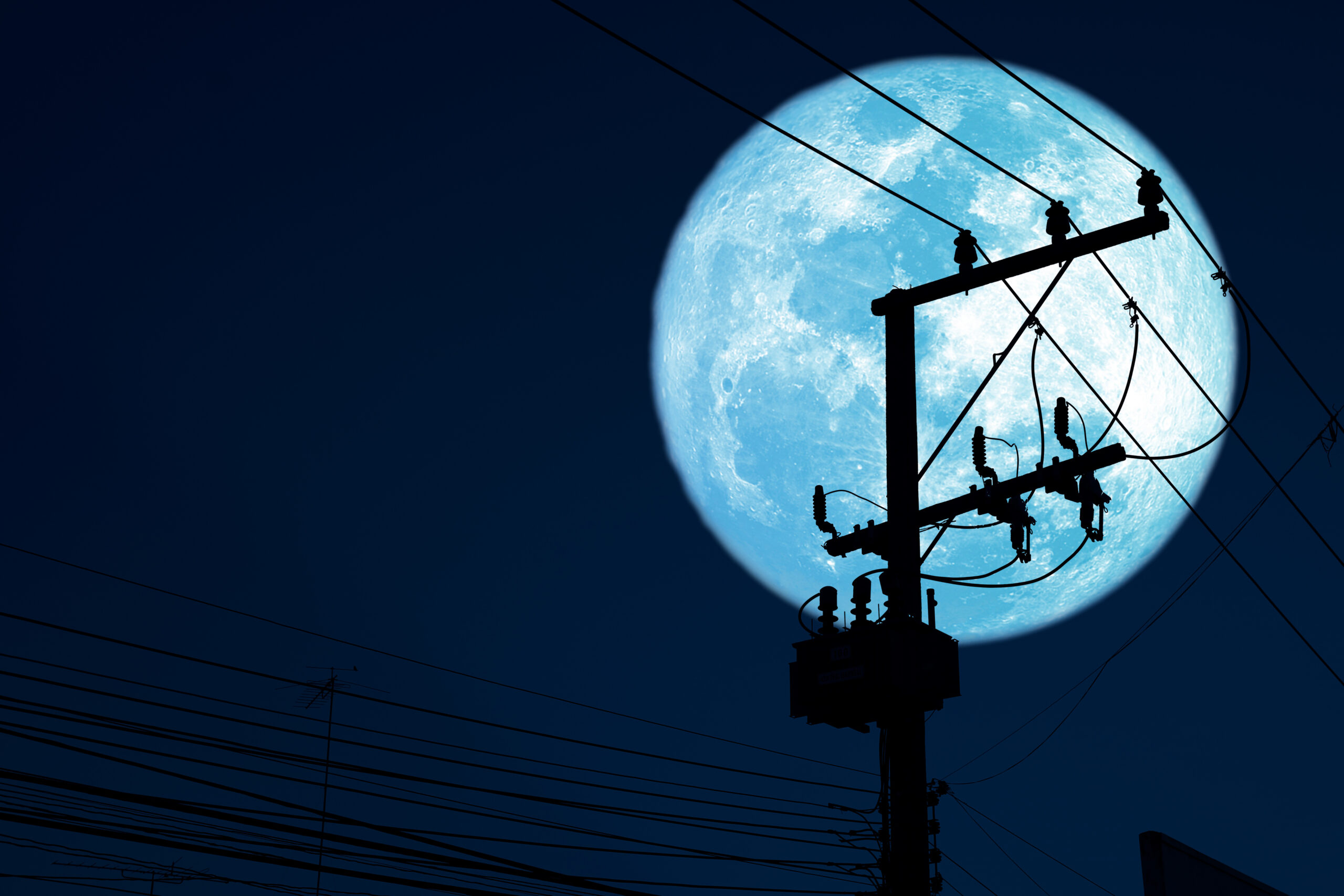It bears repeating that the last ten years have been successively the hottest on record—that 2014 was the hottest year, then 2015, etc.—which serves as a sobering reminder that climate change has escalated in the last decade, driving up temperature extremes while creating the conditions for increased volatile weather activity. This challenges utilities to meet rapidly rising demand, doubly so during the energy transition to decarbonize and electrify. These pressures have shifted the utility paradigm; as a natural monopoly, most U.S. electric utilities have not needed to market their services for decades. With increased electric demand coupled with customer energy independence, utilities have turned to demand flexibility initiatives like demand response, EV charging, or BYOD programs to increase their load management opportunities.
Since those programs flourish with more customers, utilities must find and reach the right audience. With Halloween right around the corner, we remind utilities that marketing is nothing to be afraid of. Read on for our insights on the most affordable ways to market to your customers and build rapport with your communities to garner the support needed to maximize your demand flexibility programs to enhance grid resiliency and minimize the high costs of peak energy purchasing.
The Value of Demand Flexibility Programs
According to the Department of Energy, between 80-160 GW of virtual power plant capacity is needed by 2030 to continue to meet demand, more than double the current capacity. The same report denotes that the 30-60 GW of virtual power plant capacity is primarily attributable to demand response initiatives. As such, demand flexibility programs are already adding value to the grid through aggregate conservation freeing up energy for use when needed the most.
Determining the exact potential of any demand flexibility program is difficult, given the high number of variables ranging from weather events to customer participation. Fortunately, a recent report from the Lawrence Berkeley National Laboratory entitled The State of Demand Flexibility Programs and Rates found that the programs they studied, have a cost of saved peak demand below $100 per KW, and $39 per kW across 15 Wi-Fi thermostat programs.
Did you catch that? Perhaps the biggest variable in this study is customer participation. The more customers are willing to participate, the greater the potential. With the distributed energy resource (DER) market expected to nearly double by 2027, utilities have an opportunity to develop behind-the-meter DER programs that utilize the Internet of Things and broadband connectivity to grant load management access to utilities for participating customers through the use of a Grid-Edge distributed energy resource management system (DERMS). So what motivates customer participation?
What Motivates Customer Participation
Progressively, Americans are taking climate change more seriously than ever. In fact, many Americans have expressed an urgency to prioritize renewable energy projects like demand flexibility initiatives as part of the global effort to curtail the impact of climate change. Data shows that more than 10m U.S. ratepayers enrolled in residential demand response in 2022, yielding over one terawatt-hour of residential conservation alone.
As you can see, in general, U.S. ratepayers are more interested in the renewable energy initiatives that demand flexibility programs provide, and are often willing to participate in solutions when presented with the opportunity. According to the J.D. Power 2023 Electric Utility Business Customer Satisfaction Study, outreach, high energy prices, and infrastructure maintenance ranked high among customer concerns, all of which are driven higher by the same external pressures mentioned at the start, climate change and the energy transition.
– Amber Mullaney, VP of Marketing, Virtual Peaker
Demand flexibility programs help ameliorate these concerns over by presenting load shift opportunities to grid operators and program managers to lower high peak energy costs and strengthen grid resiliency. Anecdotally, so long as customers retain device control, they are often happy to participate. So customers are interested and often willing to participate. How can you most effectively reach them on an affordable budget?
Program Marketing Basics
The real value of any demand flexibility program is in the number of willing participants. As a naturalized monopoly, electric utilities have not historically needed guidance in their customer engagement strategies; customer contact was and still often is driven by the customer, not the utility. Getting started with any marketing effort begins with determining the following factors:
- Your preferred OEM partner – this helps establish the parameters of who can be included in your program based on their choice of device.
- The messaging you wish to convey – Why are you pursuing a demand flexibility program and what do you wish to accomplish? Let your customers know in simple terms.
- Where you want to share your messaging – Do you want to connect with customers online? If so, which channel?
Next, determine how to measure the success of your marketing efforts, which can in turn demonstrate deficits in your strategies or room for improvement. Remember: connecting with customers is a process and one that takes time. Fortunately, not only do we have advice on simple, cost-effective marketing steps utilities can take, but there numerous resource guides available on subjects like:
- The appropriate marketing channels to use and when to use them
- How to best leverage incentives to drive participation
- How to segment customers
Furthermore, tools like program automation, which can automate customer outreach processes for grid event alerts and other updates, or incentive processing back-of-office software are useful after establishing a program, adding to the future success of the program through regular outreach. Now, let’s look at a few opportunities available to utility operators to streamline their marketing efforts.
OEM Marketing
Original equipment manufacturers (OEMs) often provide resources for marketing that utilities can leverage for customer outreach. Using OEM marketing, utilities can meet customers where they’re searching online through the use of pre-installed apps on mobile devices or on-device recommendations triggered by user actions or other pre-established factors. By virtue of the interface (smartphones), OEM marketing features a wealth of information that can be used to better reach customers. For more information, contact your preferred OEM partner to explore what marketing options may be available to you.
Contractor Networks
Another affordable way to reach customers is by way of some particularly direct marketing: word of mouth. Utility contractor networks start at the point of sale, by connecting with the contractors who install the preferred equipment. For example, utilities may work with water heater installers to educate customers on their potential program opportunities. Likewise, working with hardware and home improvement stores is an excellent way to educate potential customers about available thermostat programs.
Call Center Scripting
Utility call centers represent the frontline of customer engagement. Since the majority of U.S. electric utilities have a call center, they present an existing marketing resource to program managers. Generally, customer service representatives (CSRs) are often called upon to help understand bills, change billing due dates, or help transfer service from one location to another. Recently, utility call center conversations have become somewhat more complex, as customers turn to digital channels for simple answers, resulting in a higher volume of difficult customer issues than in the past.
– Amber Mullaney, VP of Marketing, Virtual Peaker
Ultimately, this demonstrates the scope of knowledge that customer service reps are required to maintain, while also underscoring an opportunity: build your demand flexibility marketing into your call center scripts. When customer service reps set up a new service, encourage them to educate on the value of whichever demand flexibility initiative may best serve their situation. If customers are struggling with bills, CSRs can educate them on the incentives associated with demand flexibility, as well as the long-term impact that these initiatives have in defraying high peak energy costs.
Don’t Stop At One: Always Have Multiple Points of Customer Contact
Whatever you do, don’t stop at one. It is imperative to find your customers and meet them where they are, whether that’s through the call center, through a contractor network, or more formalized marketing channels like digital, social media, or print media like billing inserts or billboards. These attempts at contact are referred to as touchpoints. For marketing professionals, eight touchpoints is a reasonable benchmark, meaning eight different points of contact. It’s important to note, however, that this can vary at times, but ultimately illustrates the importance of multiple means of communication: more is merrier, especially as attention spans are getting shorter.
Marketing is Nothing to Fear: Cost-Effective Ways to Market Demand Flexibility Programs Conclusion
Progressively, Americans are spending more time at home. As the DER market continues to blossom, utilities are faced with increased potential in utilizing Grid-Edge DERMS platforms to manage the behind-the-meter DER assets found in residential, commercial, and industrial properties, at the edge of the grid. Demand flexibility initiatives have proven valuable time and again in mitigating outages or defraying high costs. This spooky season, remember that marketing is nothing to fear; with the right marketing outreach, utility program managers can affordably reach the customers they need to effectively shift load and enhance grid resiliency.




